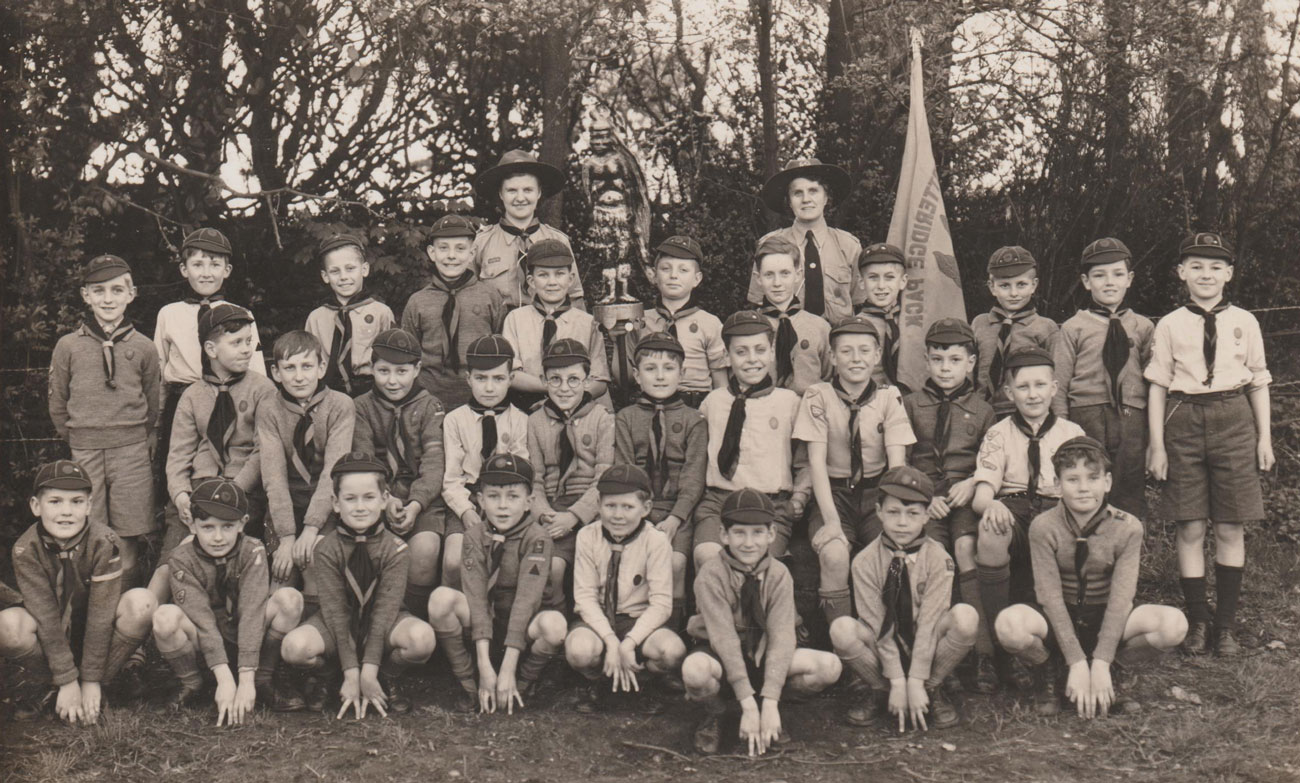
The 1st Totteridge Scout Band (I’m in the back row 3rd from the right)
As with all English towns and villages, Cranleigh has seen enormous growth and change over the years, none more so than recently. What is so heartening is the knowledge that whatever challenges our village has faced, Cranleigh’s community never fails to demonstrate genuine care for each sector of its residents. I have lived here since the 1960’s and seen Cranleigh develop, change and evolve into what we all enjoy today. COVID-19 has not thwarted Cranleigh’s charisma.
It was back in 1965 when my wife Angela and I re-discovered the village of Cranleigh. Angela recalled visits years before with her parents, to Hibbs Tea Rooms (now Barnardo’s Charity shop) when they lived in Wormley. My memory went back further to 1949 when I camped in Ewhurst, with the 1st Totteridge Scout Band, my brother playing the drums, me on the bugle. After our week away we returned home on an open lorry singing all the way as we travelled from the very quaint Surrey village, to our home in Hertfordshire, within ten miles of London.
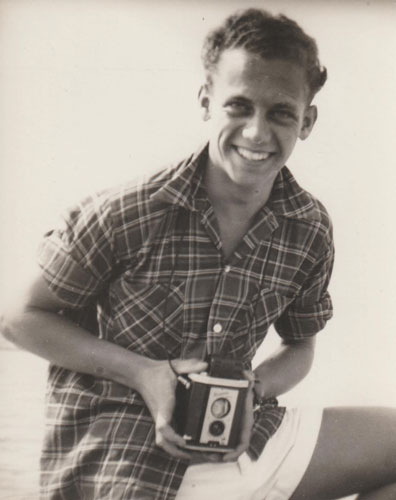
Angela and I met each other in the local Beaucrat Arts Club in Totteridge. It was a small community where both our mothers performed in Village Hall productions. I would design the scenery and her father often helped construct it. It was when Angela joined the cast and I was Stage Managing that I first noticed this beautiful actress and dancer. I had known Angela’s father for many years when he sung as a tenor in the Parish Church choir where I had started at a young age as a choir boy.
The boys’ practice on Friday nights would give way to the adult members’ rehearsal, their arrival signalled ours to leave. As we vacated the Choir Vestry, we would often switch off the organ to hear the music just die away. I don’t think these memories helped my situation when I asked for the hand of his daughter a decade or so later, in late 1950’s! Fortunately, we became great friends eventually, to the extent that the choir kindly sang on our wedding day, to accompaniment of the organist!

I had decided against joining the family business like my brother. We had a factory in Finchley, developing and printing films from all branches of Boots and a number of independent pharmacies.
I spent my whole career involved with wallpaper and fabrics, having initially been recommended by my Art Master at school, to John Line & Sons Ltd, a large national company, which then was the size of Sanderson’s. On acceptance, I joined the design team for fabric and hand printed wallpaper, thoroughly enjoying designing for the Festival of Britain and historic buildings until at 18 years, I was called up for National Service.

From 1952-54 I served in a special Unit in the Royal Navy. It proved to be a wonderful experience for me. During the Cold War every Naval Ship included four telegraphist specials, trained to read and detect transmissions from Russian submarines. I was appointed as of one of these on board three different Destroyers over my two years of National Service. The telegraphists weren’t an integral part of the ship’s company and were permitted long trips ashore at every port. While serving I visited Norway, Sweden, the Arctic Circle, Gibraltar. We sailed around the Mediterranean to Malta. Also travelled to the south of France and Italy where my telegraphist colleagues and I had the marvellous opportunity to ski.
After this two-year break, I was invited back by the directors of John Line, to work as a Junior Executive experiencing all the departments. Apart from Block and Screen printing, 22,000 Wallpaper sample books were produced for customers throughout their UK branches and other merchants. It was good to be back with friends from the Design Studio.

We got along so well we would often go at lunchtime for a swim in the Hampstead Ponds or swimming pool. The exciting selection process, working with members of the Line family was quite an experience. Recently made Assistant Factory Manager, I felt it was time to move on though when the company was taken over by Shand Kydd Ltd (Lady Diana’s family). I chose to accept an offer from the Wallpaper Manufacturers Ltd (Crown) at their Head Office in Manchester. This meant moving from Hertfordshire and I found temporary ‘digs’ with the son of the financial director.
Whilst with WPM I opened an office in Berners Street, London that just happened to be around the corner from the Middlesex Hospital where Angela was nursing in Mortimer Street. It was at this time that I proposed to Angela. After our marriage we moved to new digs together in Manchester whilst our new home was being built in Wilmslow Cheshire.
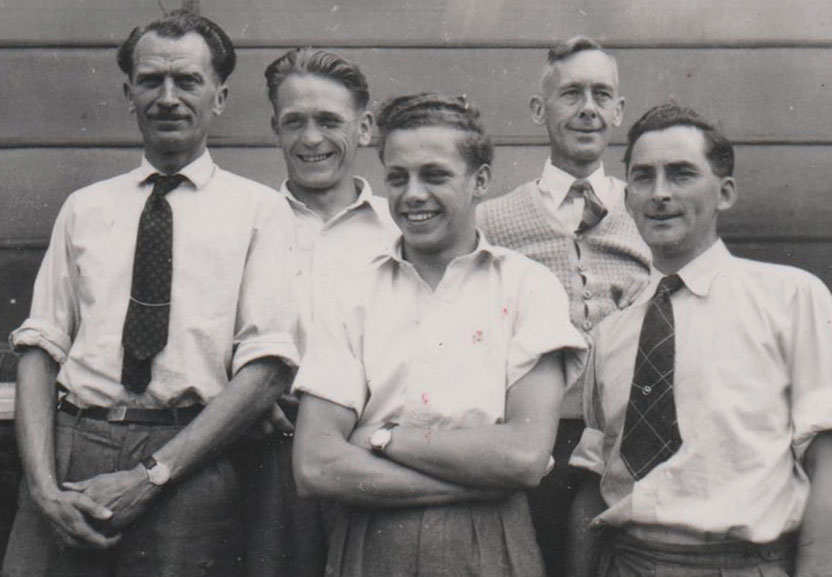
The house was detached with three bedrooms and garden. It cost £2,245. 11s. 6p, which we were delighted about. (By comparison it was £1,000 less than a house purchased by some friends who moved to Essex). While we were living there Deborah, our first child was born. Three years later, when Angela was expecting our second child, I was moved to South London, to represent the company in agreeing selections with companies like C Brewer and Homebase. This of course meant house hunting from a distance. As Angela was pregnant it was necessary to be time-efficient and find a house in a weekend. Thankfully this was accomplished and we purchased our second new house in Effingham, Surrey. A few months later, our son David was born in Epsom hospital.
While travelling around Surrey, I revisited the attractive village of Cranleigh. At that time there was a small, new development named Overford Close where the Show House had been awarded ‘House of The Year’. We were considering a move once more and had seen it featured in Ideal Home Magazine. Angela and I had such fond memories of Cranleigh so we hastened to view the Show House and liked the Close so much that we put a deposit on the house next to the Showhouse and were the first residents to move in!

We settled in quickly before later that year our third child, Amanda arrived, making us one of three families in the Close with three children. They of course had great fun with the other children as they made friends and grew up together. It wasn’t just the Close that we warmed to but ‘Cranleigh life’ was so vibrant and welcoming to Angela and I and to our young children, with so much to offer.
In 1965 this development proved to be the first of nearly 2,000 new homes built in Cranleigh, continuing into the 70’s thereby increasing the population considerably from 6,000. Other newcomers like us were keen to keep Cranleigh a village and formed a group called ‘Welcome to Cranleigh.’ It was a small team, headed up by the Rector, Rev Fred Johnson, the Parish Clerk, Mr Barber, Pat Sheen and myself. We met regularly in the ‘Parish Office’ – Mr Barber’s dining room in ‘Scatts’ on the common. I enjoyed organising the publicity for our events and would hang banners across the High Street. Half a dozen independent shops provided full window displays and a great team of volunteers delivered invitations to the various new estates as people moved into each home. Newcomers flocked to the Village Hall to be met by the representatives of a variety of clubs all welcoming them, demonstrating that ‘Cranleigh Cares’.
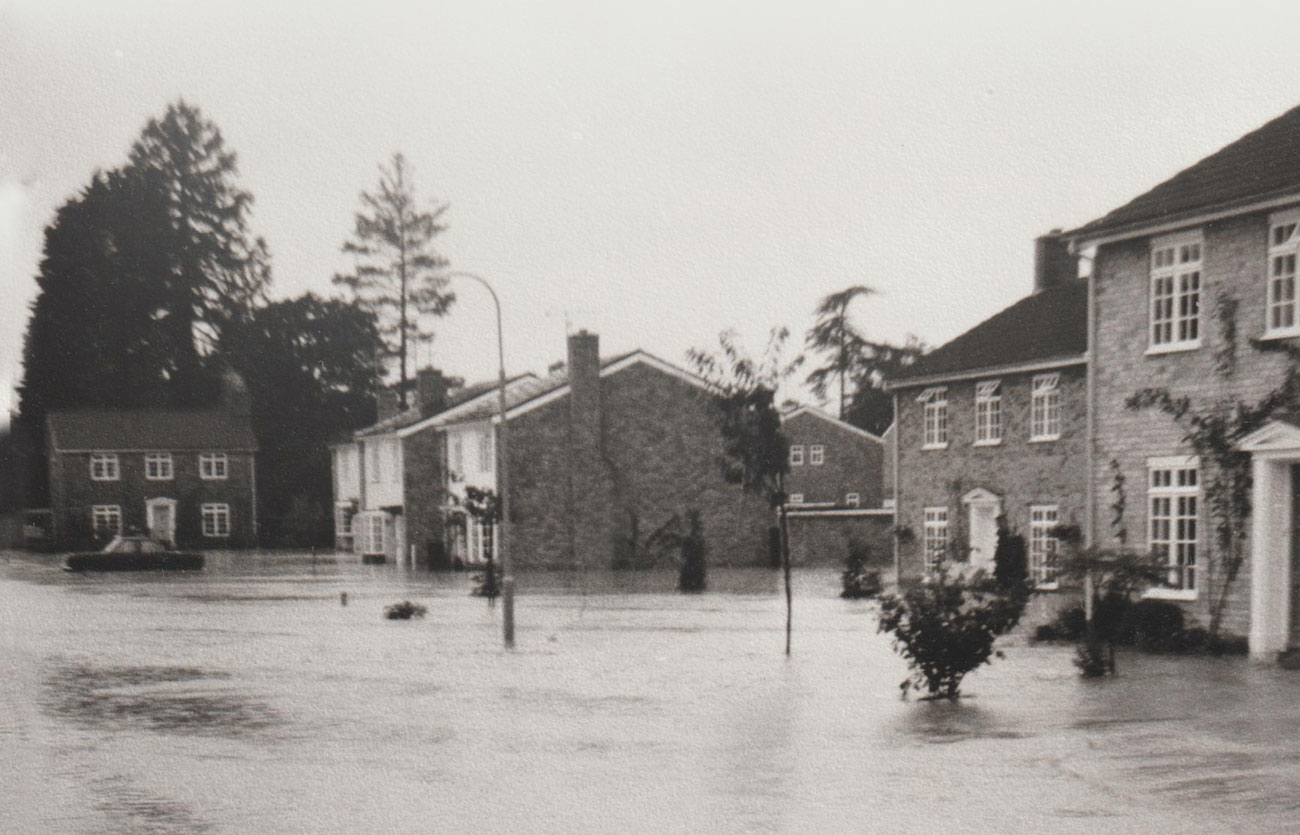
Cranleigh floods in 1968
At that time there were 65 different societies varying from Rabbit club, hobbies and nature groups. These regular events continued twice a year until the end of the large expansion and was appreciated by everyone. New estates were popping up all over Cranleigh (rather like today) at Parkmead, Sapte Close, Grange Park, Summerlands, Hitherwood, Copse Edge, Elm Park, John Wiskar Drive (named after Glebelands Head Master), with Wimpey linking up New Park Road across New Park farm fields, to Avenue Road. The lovely, modern homes were appreciated by new residents discovering Cranleigh to be such a friendly village, as well as its former residents, who recognised new life had been brought to the village.
In 1968 we helped raise money to build a public swimming pool in the village and I was pleased to be given a year’s free swimming, having designed the logo for the premises.
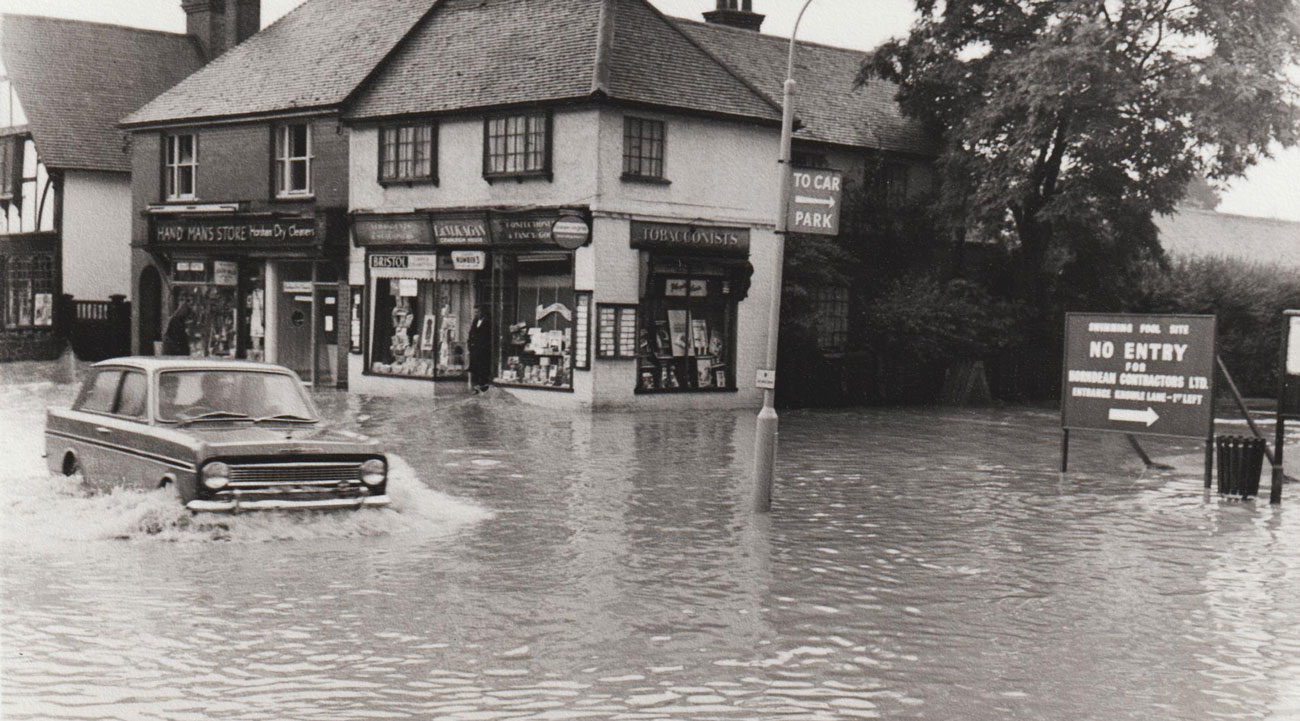
Cranleigh High Street floods at the top of Village Way in 1968
This same year proved ‘interesting’ when our home was flooded. Many will remember the week of heavy downfall when the whole village was badly affected. Streams burst their banks and water filled the streets, damaging many properties, shops and homes alike.
Angela and I found ourselves getting involved in many local organisations like Cranleigh Players an active dramatic Society, the Rotary Club and Girl Guiding. With such a rapid growth of Cranleigh’s population the two Guide Companies were full to capacity when Deborah was ready to leave Brownies, so Angela decided to form the 3rd Cranleigh Guide Company.
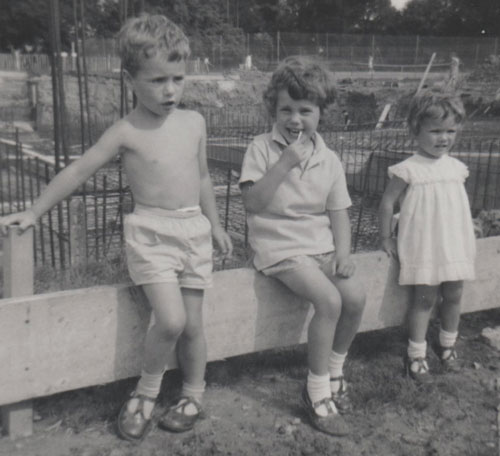
David, Deborah and Amanda 1968 waiting patiently for a swim in the new pool
We enjoyed doing many aspects of this together like preparing camp equipment, setting up the camp site and various guiding activities. When we took the Guides away, we would travel in an open-backed Cooks Removal lorry and the Girl Guides would sing all the way. Each year our camps were visited by Rector Fred Johnson and his wife Anna, who joined us around the camp fire, handing out prizes to the various winners of camp challenges.
Many a weekend was spent fitting out the new Cranleigh Guide Head Quarters, which was finally opened by Lady Baden Powel on 14th June 1980.
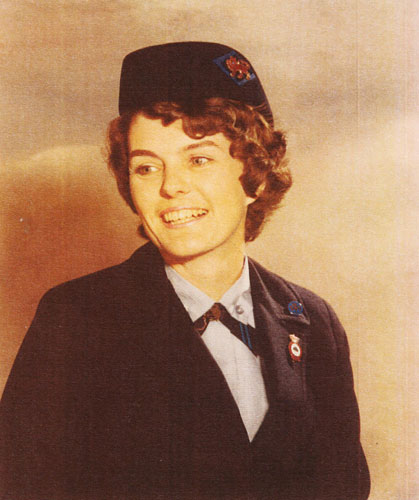
Angela starts a new Guide Company
Shortly after the Cranleigh & District Walkers Club was formed in 1983, we joined the club, walking 10-12 mile every week around Surrey and Sussex. We struck up new friendships, which developed even more on the annual walking holidays. As the years have crept by, we have aged a little, meaning the holidays are bi-annual now and we limit the regular walks to five miles on alternate Saturdays. Once U3A started in Cranleigh, several of us take walks with them.
I thrived on Cranleigh village life and embraced it with enthusiasm. However, I had to make some tough choices because my journey to work each day was very time-consuming. Like many of the village commuters, I would leave Cranleigh at 6.30am and not be home until 7pm. It was quite a drive to the North London Head office. I laid aside some opportunities and took on others, one of which was being Church Warden at the Parish Church.

Going off to Guide Camp in the lorry
It was during this time in 1989, the Parish Church had the challenge of selecting a new Rector, following the retirement of Canon Jack Roundhill. At the conclusion of the process there was slight concern because the favoured applicant was a bachelor, but finally it was agreed to appoint Rev Nigel Nicholson. The people of Cranleigh soon warmed to Nigel and many people will recall his daily walks through the village greeting everyone by name, accompanied by his black Labrador. Nigel became a well-loved and respected Rector of Cranleigh for many years, until his retirement in 2012.
My career in wallcovering was fulfilling as Sales and Marketing Director of an International Contract Wallcovering Company. We had a strong team meeting with designers and architects around UK and Europe, who would produce wonderfully designed projects, finished in exclusive silks and wide width fabric and wallcovering for major hotels and offices. Oil Rigs were amongst our customers and I really enjoyed the visits to check the projects, where there was no expense spared on hospitality food and internal finishes.

Guide Head Quarters Opening by Lady Baden Powell in 1980
On retirement, in 19XX I missed the excitement of my job but this void was soon filled by joining Task Force Romania. On Christmas Day 1989, Nicolae Ceausescu, President of Romania, was assassinated. Following his downfall, the inhumane condition of Romanian Orphanages and Children’s Hospitals were revealed on British TV by Annika Rice. Peter Spring from St Nicolas Church, was deeply affected by the scenes he saw. He was motivated to set off to Romania, with a team of volunteers in an old van full of medical supplies, early the following year. They received a tremendous welcome at the Deva Children’s Hospital and ever since then he’s organised teams to return twice every year, calling it ‘Task Force Romania’. On these trips the teams spend two to three weeks sanitising hospitals and orphanages which have been refurbished with new facilities including toilets, lighting and heating. Throughout the year money was raised by large scale annual sales in the Village Hall, along with collection of second hand clothing and tremendous support from local sponsorships to fund the trips. This much-needed work continued through the 90’s, concentrating in areas where practical support and encouragement would provide the most benefit.
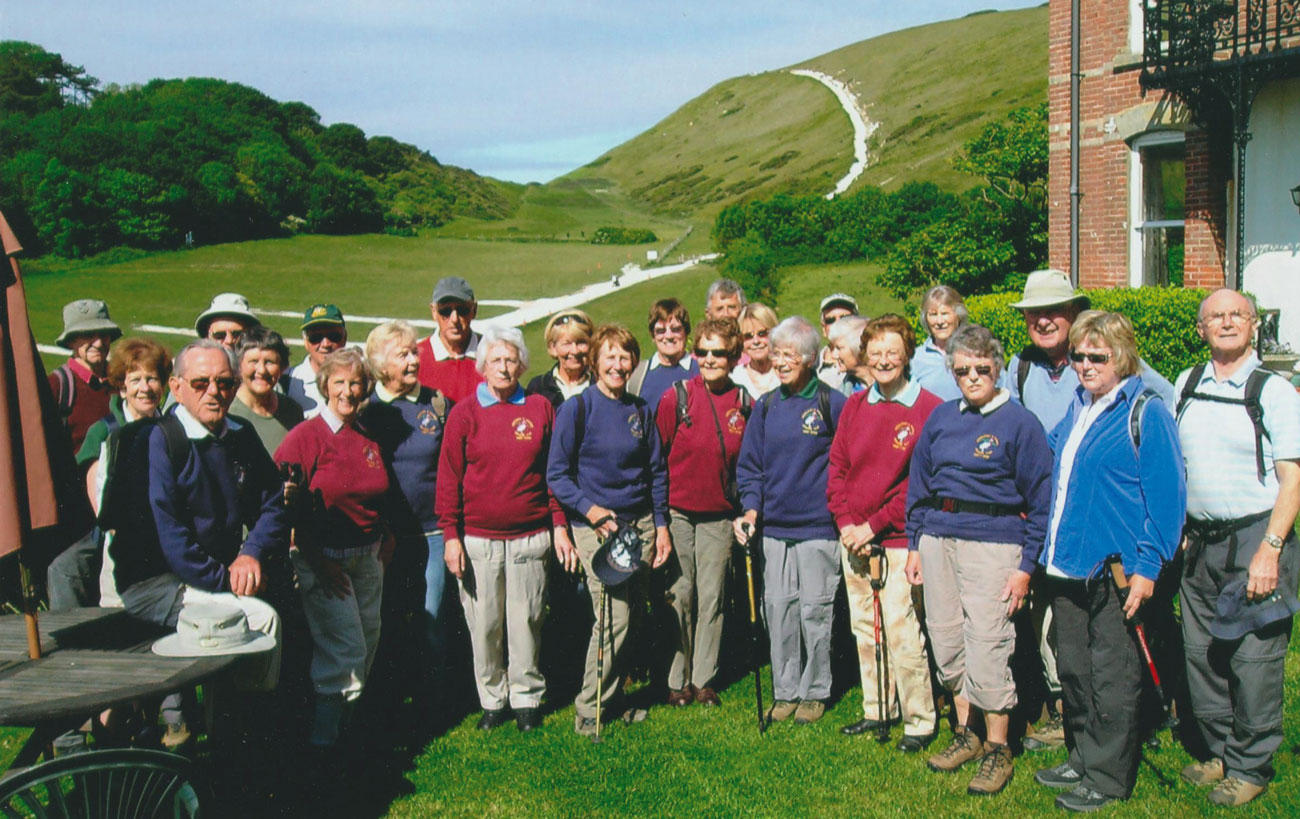
CDWC on our annual walking holiday
In 2013 ten young volunteers from St Nicolas Church Youth group gained experience as leaders of a camp for orphans and deprived children in the Carpathian Mountains. Seeing children first-hand, who had nothing was quite moving for our Youth group, at that age.
In 2005 I was privileged to lead a team of 14 Plumbers and Electricians, plus handy volunteers to the Bethlehem Centre in Hunedoara. There we fitted out a derelict school building, which had lain empty apart from rubbish and the remains of fires and rot, a consequence from five years of slow encroachment. The building was converted within 14 days into a smart Christian Welcome Centre for local people. These folks had survived the Ceausescu years by living with five or six people in one room. They had no heating (apart from burning a tyre in their room when desperate). Before the TFR team left, the three floors of the large building had electricity, lighting, heating, toilets, showers laundry and a kitchen installed.
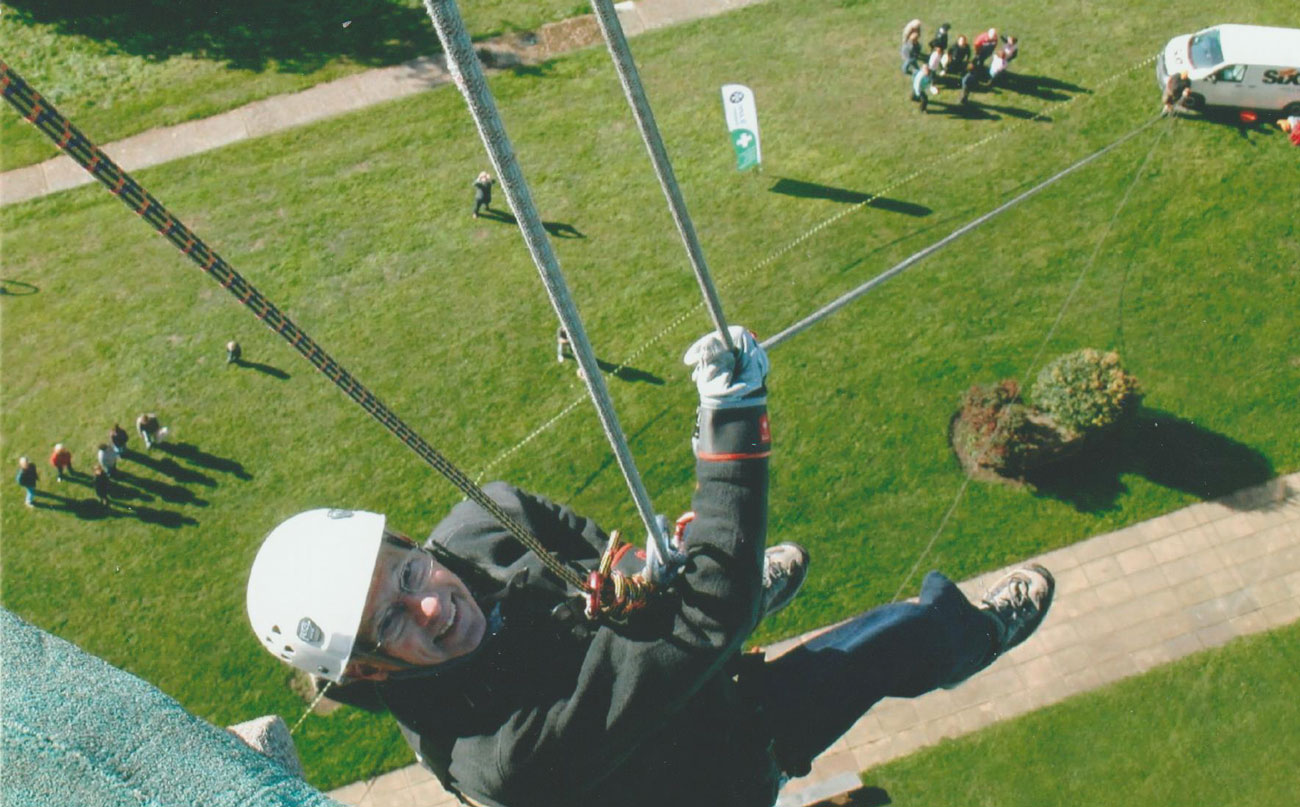
Michael’s Abseil, raises £2000 for St John Ambulance in 2010 (aged 75yrs)
As we left exhausted, arrangements were put in place to start an appeal back in UK to send Children’s Christmas Shoeboxes every autumn, to the Centre for distribution to local children. On our return we contacted all the UK Churches who supported projects in Romania. From there this project has grown enormously over the years and now 5,000 boxes leave a Cranleigh warehouse every November to go to the Centre. A huge need remains in the area and TFR are delighted that the Rotary Club of Cranleigh plan to run this important project next Christmas, 2020.
In recent years, my main concern has grown for the many friends we know with Dementia. I have recorded over 40 people in Cranleigh with Dementia and their Carer/Partners. Along with a number of our Pastoral Assistants from St Nicolas Church, we have started ‘Memory Lane’ which meets in the Cranleigh Arts Centre at 2.30 – 4.30pm, on a Monday afternoon, whilst the Centre is closed. The people experiencing dementia are stimulated with physical and mental exercise by specialists in memory retention and physiotherapy. During this time their carer/partners enjoy a time together, away from their stress, over tea and cakes and occasional relevant talks. During the Covid19 pandemic a programme has been set up via ZOOM during each week for Carers in isolation, inviting them to join in a sing-a-long, exercises and social time together.
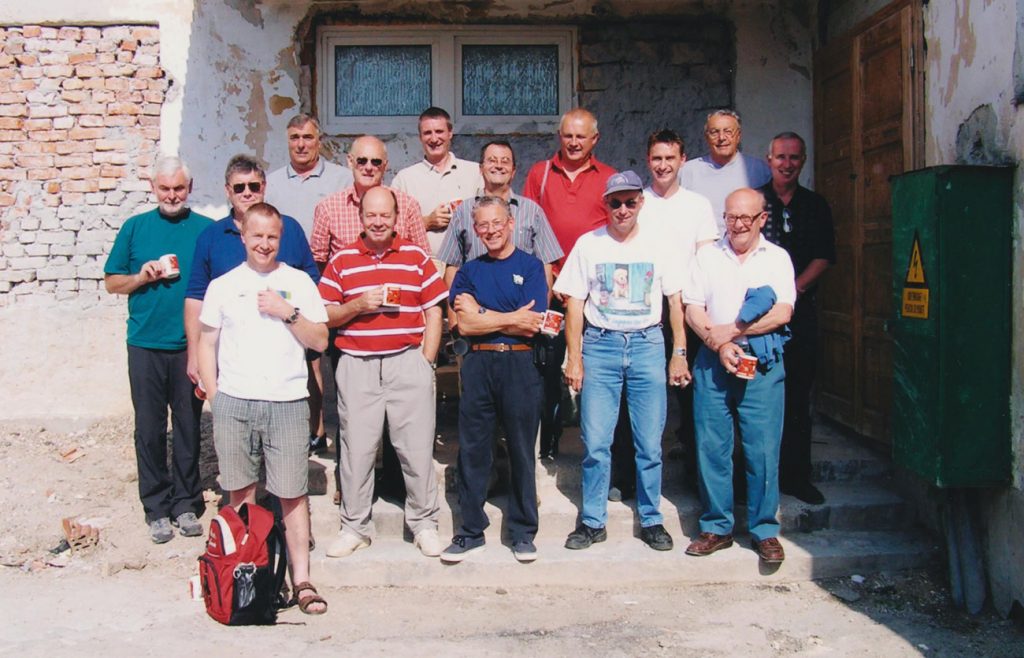
TFR Team lead by Michael in 2012
It’s interesting to see how the ‘Old Newcomers’ of the 70’s are welcoming over 3,000 ‘New Newcomers’ in a modern ‘Welcome To Cranleigh’ way, through social media, the website and at the SMART Cranleigh’s ‘Drop In Centre’ next to Cromwell Tea Rooms. Cranleigh has always had so much to offer with its attractive village surrounded by beautiful countryside, where we are all free to roam. Now more than ever, we continue our motto “Cranleigh Cares”.
Michael Wild, June 2020
Retired local Businessman











